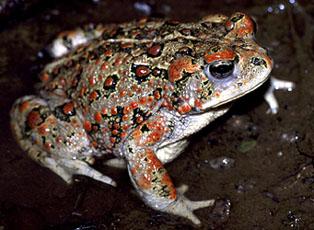27: Boreal Toad
I write to you from Arapahoe, Ute, and Cheyenne land. I am interested in learning about the different animals that live in the place where I was born. I want to mention that biological classification as taught by western science has its roots in racism, sexism, and transphobia – here’s a good explainer about why.
So remember the boreal chorus frog? Now it’s time to learn about the boreal toad (Anaxyrus boreas boreas, previously known as Bufo boreas). This is the only alpine species of toad known in Colorado, and prefers to live between 8000 and 12000 feet in quiet, shallow water. They enjoy aspen groves and riparian forests – I bet they like the areas around beaver dams, since they are often found near willows.
That elevation gets pretty cold in the winter – how do they survive? Turns out that they might even use beaver dams to hibernate. Rocky Mountain National Park’s website has this to say:
“Boreal toads may hibernate in rock chambers near streams or in small mammal burrows or beaver dams. Hibernacula near streams provide an environment that is kept above freezing by the proximity of running water. Hibernacula in burrows or beaver dams depend on depth below the frost line and insulation to prevent freezing. Boreal toads have been seen out of their burrows during the winter on warm, sunny days, basking in the sunshine.”
Sadly they are endangered in Colorado and New Mexico due to a chytrid fungus called Batrachochytrium dendrobatidis (Bd). This is a deadly disease that affects many species of amphibians worldwide, first noted by scientists in Australia in 1993, although later studies found that it had been present since the 1970s. If you find an amphibian and need to pick it up for whatever reason, you should always handle it with plastic gloves on, which helps prevent the spread of this disease.
I’ll leave you with a cute picture of one from Wikipedia:
